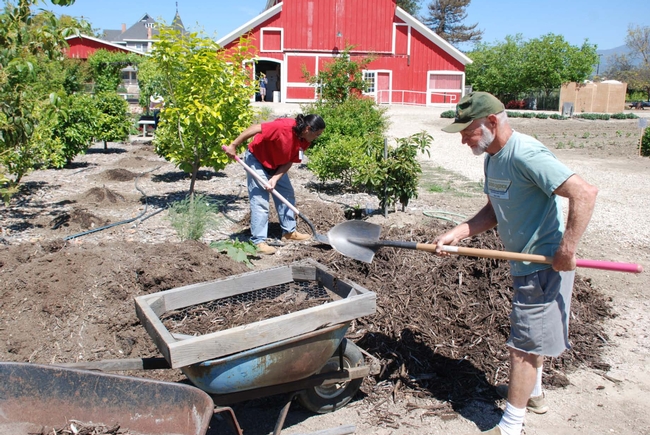
University of California
Cooperative Extension Ventura County
Soil Preparation
The 2011 UC Master Gardener Vegetable Demonstration Garden Project has recently finished. A group of certified Master Gardeners and trainees spent time each week from January 27 through December 15 learning vegetable gardening techniques through hands-on experience.
They documented their project so that they could impart lessons learned throughout the2011 project. This article is the third in a series to share this knowledge.
Soil preparation:
Healthy soil is key for healthy plants. Preparing soil before planting can improve nutrients available for uptake and water holding capacity.
- The moisture content of the soil is critical when tilling. The soil should not be too wet or too dry. Irrigation lines should be removed several days before tilling.
- When transporting compost in a pickup truck, make sure you have a tarp and the necessary tie down lines to adequately cover the pile. Otherwise, compost will be lost during transit.
- Make sure you have and use protective equipment when using tilling machinery (e.g., ear plugs, solid shoes and safety glasses)
- Tilling can create an interface between the soft tilled soil and the hard soil below. This interface can be a barrier to roots and water flow. To minimize this, double dig or loosen the soil below the tilling depth.
- It is easy for a tiller to lunge forward. Remove any items from the area that could get caught in the tines during tilling (e.g., irrigation lines)
- Extensive vegetative growth was observed on many of our plants. This could be because the soil was amended with copious amounts of compost. A soil test can be used to determine what level of nutrients are in the soil (make link to soil test kit blog post). If needed, phosphorous can be added to encourage more flower and fruit formation. Mulching with compost might be a better option than rototilling the compost into the soil because the nutrients will be released in a more controlled fashion.
- If peat moss and vermiculite are added to the soil and then tilled in, the tiller will go much deeper than it would otherwise. Care is needed to avoid overloading and stalling out the tiller.
Questions on gardening? Please contact our Master Gardener helpline at 645-1455 or contact them by email at mgventura@ucdavis.edu.

Time spent preparing soil in the garden is time well spent. Healthy soil provides nutrients and promotes healthy root growth.
